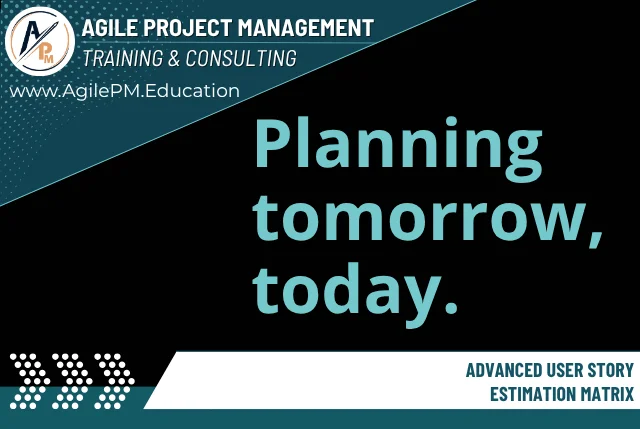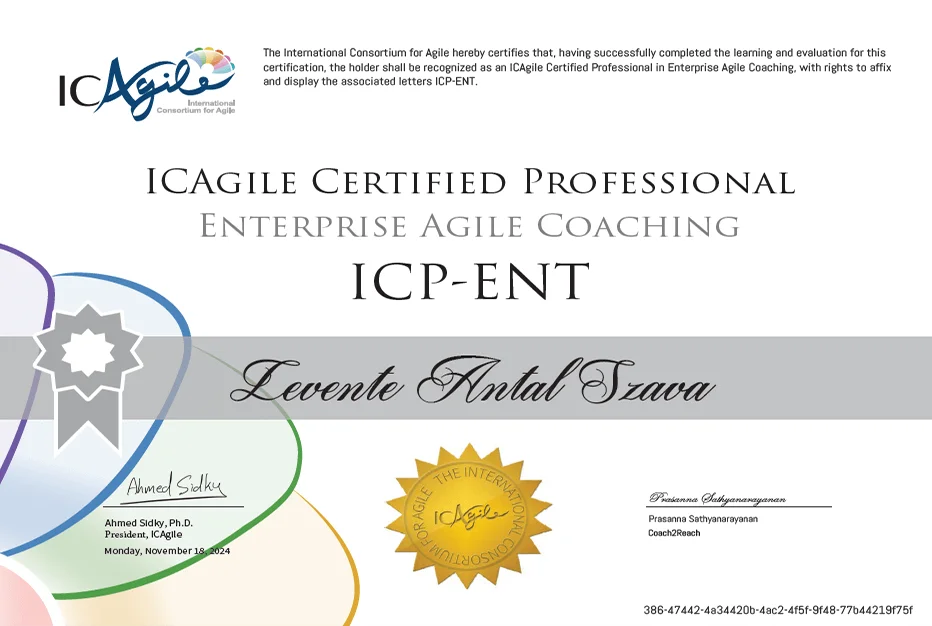Advanced User Story Estimation - Combining Fibonacci, Uncertainty, Risk and Business Value

Imagine if you could analyse every User Story with a holistic view that balances technical effort, uncertainty, risk, and business impact—all in one transparent framework.
What if your team could avoid subjective debates and make objective, data-driven decisions about what to work on next?
Welcome to the Advanced User Story Estimation Matrix, a model that helps Agile teams prioritize work smarter, not harder.
In traditional Agile practices, Story Points are a popular method to estimate the size of work. However, they often fall short when complexity is not the only factor.
Projects today are fast-moving and full of unknowns. Teams need to think beyond “how big is this task?” and also ask:
- How risky or uncertain is this task?
- How valuable is this to the customer or business?
- Given its size, how worthwhile is it to tackle right now?
This article introduces a multi-factor matrix approach, which combines classic estimation (like Fibonacci) with modern considerations such as uncertainty, risk, and business value.
By the end, you’ll be able to apply this matrix to your Agile process and bring clarity to your backlog prioritization.
Why go beyond simple Story Points?
While Story Points are great for capturing complexity, they often miss key dimensions:
- Uncertainty → Is this a well-known task or full of unknowns?
- Business Value → How much does this contribute to the product or customer?
- Risk Factor → What is the likelihood of encountering roadblocks or delays?
In real-life projects, ignoring these can lead to suboptimal Sprint planning and poor stakeholder alignment.
Introducing the Advanced Estimation Matrix
This estimation model uses the following factors:
✔️ Complexity (Fibonacci) – Classic complexity estimation using Fibonacci numbers to reflect increasing uncertainty as tasks grow.
✔️ Uncertainty (1-5) – A simple scale to capture how confident the team is about the task’s implementation details.
✔️ Business Value (1-10) – Measures the importance of the User Story from a business or user perspective.
✔️ Risk Factor (1-5) – Captures potential technical risks, dependencies, and unforeseen challenges.
Calculated Metrics
| Metric | Formula | Purpose |
|---|---|---|
| Estimated Story Points | Complexity × Uncertainty | Adjusted effort estimation based on uncertainty. |
| Priority Score | Business Value / (Complexity + Risk Factor) | Value-to-effort ratio to help rank tasks. |
| Combined Weight | Estimated Story Points × Priority Score | Final weighted metric for ranking and prioritization. |
The Logic Behind the Matrix
- Effort + Uncertainty → Real Effort (Estimated Story Points)
- Real Effort + Business Value + Risk → Relative Priority (Priority Score)
- Relative Priority + Effort → Planning Decision (Combined Weight)
How to use the Matrix?
During Backlog Refinement
- Identify low-value, high-complexity tasks and consider postponing them.
- Highlight quick wins—high Priority Score and low Estimated Story Points.
During Sprint Planning
- Use Combined Weight to focus on stories that are valuable and feasible for the next Sprint.
- Discuss stories with high Estimated Story Points → break them down if necessary.
During Stakeholder Conversations
- Use Priority Score to justify prioritization.
- Demonstrate data-driven decision-making.
Example (from a Mobile Fitness App): Developing a simple fitness app that allows users to track workout plans, set goals, and view statistics.
| User Story | Complexity (Fibonacci) | Uncertainty (1-5) | Business Value (1-10) | Risk Factor (1-5) | Estimated Story Points | Priority Score | Combined Weight |
|---|---|---|---|---|---|---|---|
| User Registration | 3 | 2 | 9 | 1 | 6 | 2.25 | 13.50 |
| Password Reset | 2 | 1 | 7 | 1 | 2 | 2.33 | 4.67 |
| Workout Sync | 5 | 3 | 8 | 2 | 15 | 1.14 | 17.14 |
| Push Notification Management | 3 | 2 | 6 | 2 | 6 | 1.20 | 7.20 |
| Goal Setting and Editing | 5 | 3 | 7 | 3 | 15 | 0.88 | 13.13 |
| Export Statistics to PDF | 8 | 4 | 5 | 3 | 32 | 0.45 | 14.55 |
| Social Sharing (Facebook, Instagram) | 5 | 2 | 6 | 2 | 10 | 0.86 | 8.57 |
| Offline Mode Support | 8 | 5 | 4 | 5 | 40 | 0.31 | 12.31 |
| Built-in Chat Functionality | 13 | 4 | 3 | 4 | 52 | 0.18 | 9.18 |
| AI-based Workout Recommendation | 21 | 5 | 8 | 5 | 105 | 0.31 | 32.31 |
Explanation of the Advanced Estimation Matrix Columns
| Column | Description |
|---|---|
| User Story | The description or title of the user story or feature. This represents a requirement or functionality from the user’s perspective. Each row in the matrix corresponds to one User Story (e.g., "User Registration" or "AI-based Workout Recommendation"). |
| Complexity (Fibonacci) | This represents the technical complexity of the task. Fibonacci numbers (1, 2, 3, 5, 8, 13, 21) are used because they reflect the increasing uncertainty and effort required for larger tasks. Higher numbers mean more technically complex or resource-intensive stories. |
| Uncertainty (1-5) | This measures how unknown or unclear the task is. Even simple tasks can be risky if they involve new technology, vague requirements, or external dependencies. Higher scores indicate more uncertainty → which makes the task potentially more difficult. |
| Business Value (1-10) | This represents how important this story is for the business or customer. A higher score means that the feature brings more value, either in terms of revenue, customer satisfaction, or market impact. Product Owners or stakeholders often assign this. |
| Risk Factor (1-5) | This measures potential risks in implementation, such as integration issues, architectural challenges, dependencies, or possibility of bugs. Higher risk means the task is less predictable and might require extra time/effort. |
| Estimated Story Points | Estimated Story Points = Complexity × Uncertainty This is a calculated field representing the adjusted effort. It multiplies Complexity and Uncertainty to reflect that a technically difficult and unknown story will likely require more time and effort to complete. |
| Priority Score | Priority Score = Business Value / (Complexity + Risk Factor) This is a calculated field showing how "worthwhile" a story is relative to its size and risk. It divides Business Value by the sum of Complexity and Risk Factor. Higher Priority Scores suggest that a story offers better value for effort and risk. |
| Combined Weight | Combined Weight = Estimated Story Points × Priority Score This is the final calculated field, combining effort, uncertainty, risk, and business value into one number. Higher Combined Weight indicates that a story is large AND important → should be prioritized or carefully planned. Low Combined Weight stories may be less important or suitable for postponement. |
How to interpret the columns together
☑️ Example 1 → High Complexity, High Business Value, Low Risk:
→ May result in a moderate Combined Weight, worth prioritizing.
☑️ Example 2 → Low Complexity, High Uncertainty, Moderate Business Value:
→ May show up with high Estimated Story Points but lower Priority Score → risky but not urgent → investigate further.
☑️ Example 3 → High Complexity, High Risk, Low Business Value:
→ Very low Priority Score → might not be worth pursuing right now.
Benefits of this approach
- Provides a multi-dimensional view of User Stories
- Promotes balanced, objective decision-making
- Aligns technical feasibility with business priorities
- Supports transparent and traceable prioritization
The Advanced User Story Estimation Matrix is perfect for teams working on complex products with many competing priorities.
By integrating uncertainty, risk, and business value with classic estimation, you can bring clarity and confidence to your Agile planning process.
Smarter estimation leads to smarter prioritization – and ultimately, delivering more value to your customers, faster.
Share on


